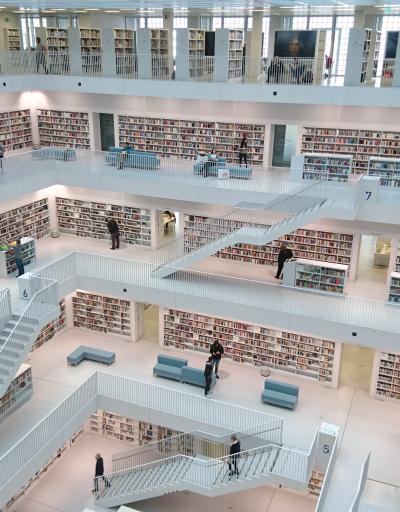
Shutterstock
Technical secretariat for cultural mercosur (stmc)

Where
Argentina
Argentina
When
2020
2020
Who
Agency for international cooperation
Agency for international cooperation
Website of the policy/measure
Website
Website
Read the full report
Go to full report
Go to full report
Description of the policy/measure
The national agency for international cooperation is responsible for the technical secretariat of cultural mercosur (created as a permanent agency of cultural mercosur in 2010) which, in turn, is responsible for ensuring the implementation, continuity and follow-up of the activities, programs and projects undertaken within the framework of cultural mercosur (comprising the highest national cultural organizations of argentina, brazil, bolivia, chile, colombia, ecuador, guyana, peru, paraguay, suriname, uruguay). the stmc coordinates the agenda of the following organizations under the authority of cultural mercosur (acronyms in spanish): regional coordinating committee (ccr); cultural heritage committee (cpc); cultural diversity committee (cdc); creative economy and cultural industries committee (cecic); arts committee (ca); cultural mercosur information system (sicsur) forum.
2005 Convention Monitoring Framework Goal(s)
Area(s) of Monitoring
Cultural Domain(s)
Transversal Priority(ies)
Results achieved
Since 2016, the meeting of ministers of culture of mercosur and its subsidiary bodies have built a complex agenda that includes programs, projects and activities aimed at the promotion and strengthening of international cultural cooperation, considering culture as a central and cross cutting factor, which impacts on the expansion of mercosur economies, and the visibility of the region's cultural diversity, among other points. in this context, during the period 2016-2020, the technical secretariat of mercosur promoted a series of actions aimed at fostering the free circulation of artists and the creation of favorable conditions to expand the cultural goods and services market in the region. today, the creative economy (cultural industries) is one of the fastest growing areas in the world economy. it is also one of the most profitable areas in terms of business generation, employment and export services in the region. in recent years, progress has been made towards a cultural and creative economy, as a phenomenon where a series of activities with socio-economic potential converge, providing added value through creativity, knowledge and information. throughout latin america, the use of ideas and creativity has become an essential role in regional economies, which are innovative elements in the production and consumption of goods and services in general, beyond the environment of cultural industries and the economy of culture. the experience of the southern cultural industries market (micsur) and the policies that emerged from it have served as a model to consolidate an ecosystem that transcends borders. it also helped find a regional space in the national markets that have developed in recent years, such as the chilean creative economy market (chec), the creative and cultural industries of uruguay (micuy), or the argentine creative industries market (mica). as part of the achievements of this period, we can mention the promotion of the argentine initiatives "cuadernos de la diversidad" (diversity notebooks) and training in gender and cultural diversity, whose main objective is to promote the gender perspective in the design and development of public policies related to cultural diversity in the countries of the region. in addition, under the unesco participation program - 2016-2017 call, a regional project entitled "map of artistic residences of mercosur" was implemented and approved by unesco with an allocated amount of usd 35,000 (us dollars). the project was an argentine proposal that was submitted as a regional initiative of cultural mercosur, supported by all member states, plus colombia and ecuador. in addition, progress was made in the implementation of the mercosur cultural heritage category, which establishes the criteria for recognition of cultural objects of regional interest, considering that: cultural heritage contributes to the recognition and appreciation of the region's cultural identity; heritage assets constitute elements to understand references, principles and values present and shared among the countries of the region; the recognition of the importance of cultural assets beyond country borders is an important integration factor among the countries of the region. during this period, the following items were declared cultural heritage of mercosur: "yerba mate" (a plant with leaves used in an infusion), "chamame" (folkloric music and dance, typical of some regions of argentina, brazil, paraguay and uruguay), mercosur building (in montevideo), "cumbes, quilombos and palenques" (former settlements where fugitive slaves lived as free people), among others. we can also mention the efforts to build an agenda of common interests including international organizations (such as the organization of ibero-american states and unesco, among others), and other regional spaces such as the pacific alliance and the european union. finally, it should be noted that during 2020, based on an initiative proposed by argentina that brought together aligned countries in cultural mercosur, we are implementing a measurement of the effects of the covid-19 pandemic on the cultural and creative industries of the region, which is fundamental to begin designing policies and strategies tailored to the needs of each country in the region. this initiative is supported by the inter-american development bank (idb), the ibero-american general secretariat (segib), the united nations educational, scientific and cultural organization (unesco) and the organization of ibero-american states for education, science and culture (oei).
Evaluation of the policy/measure
As a result of a continuous evaluation process, it was decided to move forward in the current year to update cultural mercosur regulations in order to account for changes at all levels (technological, social, etc.) that impact culture and the regional integration process. as a result of this update, a new work program for the fy 2020-2022 is expected to be issued by the end of 2020.


